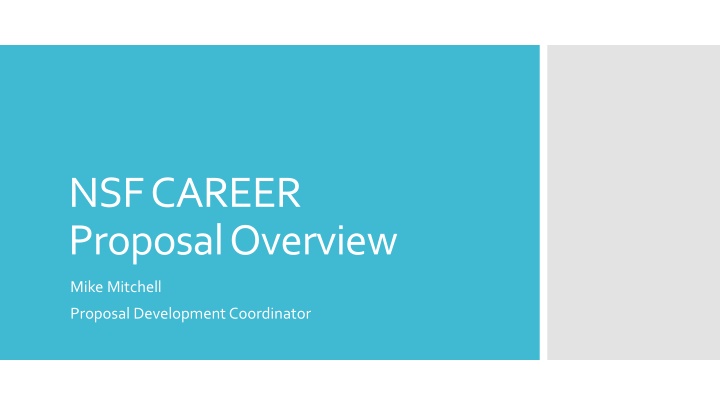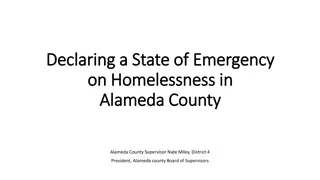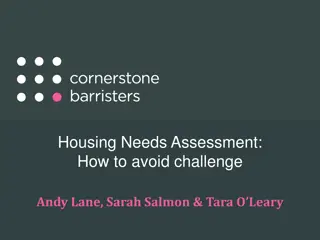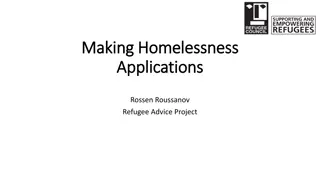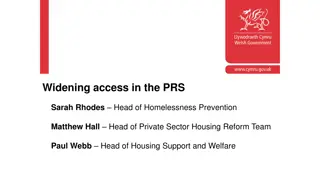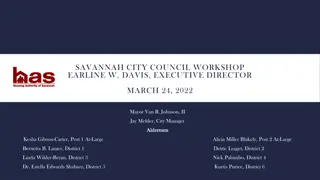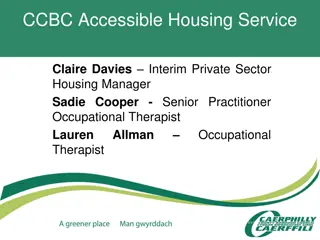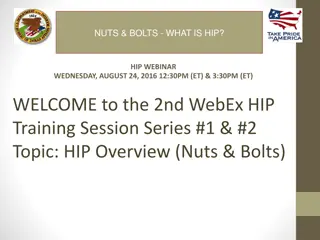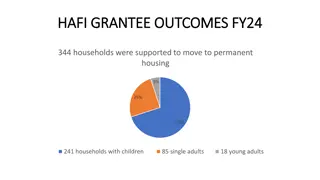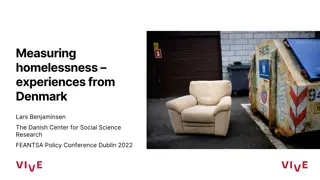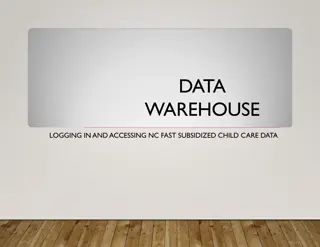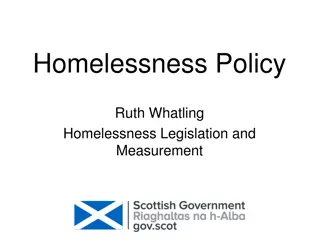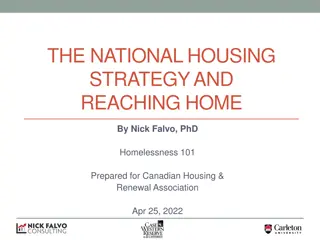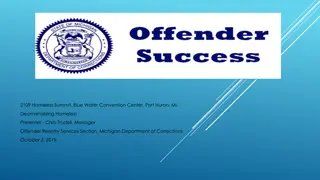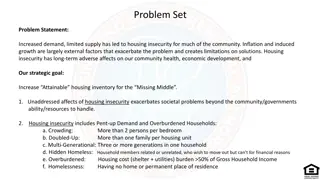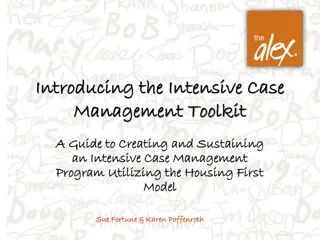Can Subsidized Housing Address Homelessness in New England?
The study explores how subsidized housing can combat rising homelessness in New England, focusing on sheltered families and the impact of LIHTC incentives on affordable housing projects. It discusses the federal definitions and measurement methods of homelessness and proposes potential reasons for the increase in family homelessness in the region. The role of area-specific shelter policies, such as Massachusetts' right to shelter law, is also analyzed.
Download Presentation

Please find below an Image/Link to download the presentation.
The content on the website is provided AS IS for your information and personal use only. It may not be sold, licensed, or shared on other websites without obtaining consent from the author.If you encounter any issues during the download, it is possible that the publisher has removed the file from their server.
You are allowed to download the files provided on this website for personal or commercial use, subject to the condition that they are used lawfully. All files are the property of their respective owners.
The content on the website is provided AS IS for your information and personal use only. It may not be sold, licensed, or shared on other websites without obtaining consent from the author.
E N D
Presentation Transcript
NSF CAREER Proposal Overview Mike Mitchell Proposal Development Coordinator
FSU Proposal Transmittal Form Cover Sheet Project Summary Table of Contents (generated automatically) Project Description (15 pages) References Cited Biographical Sketch of PI Budget and Budget Justification Current and Pending Support Facilities, Equipment, and Other Resources Additional Supplementary Documents Departmental Letter Letters of Collaboration Data Management Plan Post-Doc Mentoring Plan (if applicable) Collaborators and Other Affiliations Proposal Structure
1-page Limit Must Have Sections: Overview Intellectual Merit Contribution you will make to science Broader Impacts Contribution you will make to society Project Summary Self-contained, overview of the entire project First Impression Most likely document to be read by public, journalists, politicians No jargon, focus on significance of work
15-page limit Description of the proposed research project, including preliminary supporting data where appropriate, specific objectives, methods and procedures to be used, and expected significance of the results; Description of the proposed educational activities and their intended impact; Description of how the research and educational activities are integrated or synergistic; Description of other broader impacts, besides the education activities, that will accrue from the project; and Results of prior NSF support, if applicable. Project Description
Overview of the proposal What are you doing? What are your long-term career goals? How will CAREER funding enable them? Why is this project important? What are the specific research and educational goals of the project? Introduction
What is/are your research hypothesis? What specific tasks and activities are planned? How will you evaluate the success of these tasks? What is the expected significance of your results? How will the work conducted here influence other work to be done in the future? How is the proposed work innovative/creative? What is the timeline for completing the proposed tasks? Research Plan
What are the specific proposed education activities? Who is the audience for your education activities? How will you measure the impact of these activities? How are the education and research activities integrated ? (separate labeled section) Do you have any industrial collaborators? How do these education activities fit into your career teaching goals? Education Plan and Broader Impacts
incorporating research activities into undergraduate courses; teaching a graduate seminar on the topic of the research; designing innovative courses or curricula; providing mentored international research experiences for U.S. students; linking education activities to industrial, international, or cross- disciplinary work; supporting teacher preparation and enhancement; conducting outreach and mentoring activities to enhance scientific literacy or involve students from groups that have been traditionally underrepresented in science; researching students' learning and conceptual development in the discipline; implementing innovative methods for evaluation and assessment; or creating cyberinfrastructure that facilitates involvement of the broad citizenry in the scientific enterprise. Education Activities Examples
Work with your Department/College Financial Management Staff! Minimum award is $400k ($500k for BIO, ENG, OPP) If an activity is in the proposal, it needs to be: In the budget OR Explained why it s not in the budget Budget and Budget Justification Ask for EXACTLY what you need Low-balling leads reviewers to question if you ll have the resources to be successful Padding with unnecessary expenses is frowned upon
Current & Pending Support and Facilities Statement Current and Pending Must use NSF- required format Facilities Statement Used to give the reviewers the confidence that you have the resources available to be successful Describe the facilities/equipment/resources that you will need for THIS project Outline available on NSF Toolkit Links to College/Department facilities pages on OPD website
Letters of Collaboration MUST follow specific format Template on NSF Toolkit Describe nature of and need for collaboration in the proposal narrative Department Letter and Letters of Collaboration Department Letter (2 page limit) MUST Include: Statement confirming CAREER eligibility Statement confirming that PI s goals are aligned with the Department s and that the Department supports them Description of how these goals are intertwined and how the Department will ensure the PI receives adequate mentoring
Data Management Plan and Post-Doc Mentoring Plan Data Management Plan Resources available on NSF CAREER Toolkit, and at FSU Libraries All proposals must have a Data Management Plan Post-Doc Mentoring Plan If applicable (Typically CAREER budgets are not large enough to support this)
Collaborators and Other Affiliations Biosketch Other Documents Required Templates on NSF Website
Sponsored Research Administration required form Download from SRA website Proposals due to SRA at least three business days before NSF Proposal Transmittal Form
Mike Mitchell Proposal Development Coordinator Questions? 850-644-9511 mike.mitchell@fsu.edu
